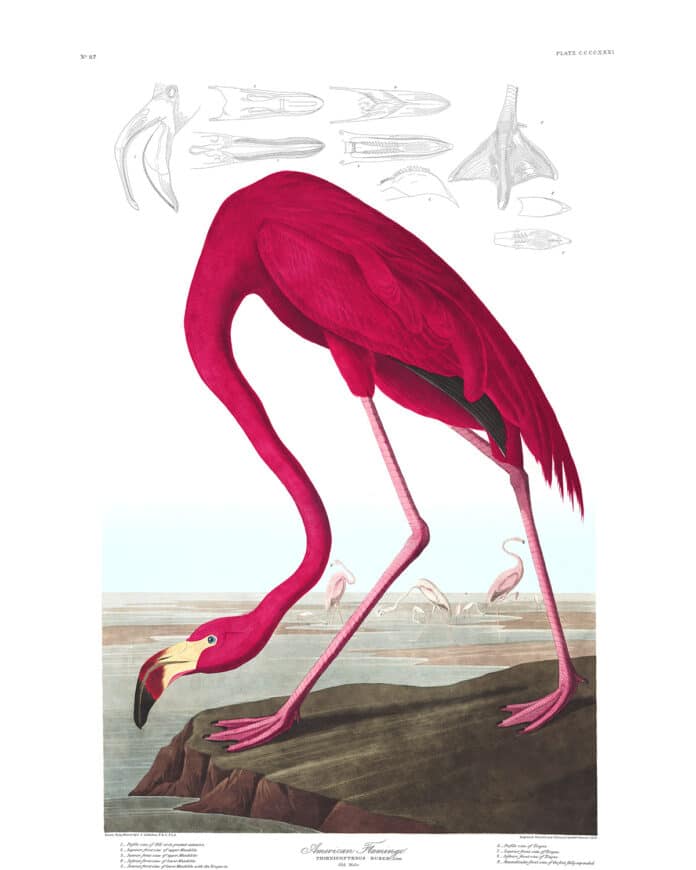For a long time Flamingos have been considered exotic in Florida. This had real world consequences since many of Florida former roadside attractions have become part of the Florida State Parks. The Florida State Parks are only allowed to have native animals to Florida.
The requirement for the state parks to only display native animals led to the Governor declaring the hippopotamus (Lucifer “Lue”) at the Homosassa Springs State Park as a native of Florida. This was necessary since they could not find a new home for the beloved elderly hippopotamus and since they were only allowed to display native Florida animals, it was the easiest way to keep Lue in the park.
In 1832, none other than John James Audubon (famed ornithologist and namesake of the Audubon society) reported spotting a flock (of Flamingos) near Indian Key. He wrote “On the 7th of May, 1832, while sailing from Indian Key, one of the numerous islets that skirt the south-eastern coast of the Peninsula of Florida, I for the first time saw a flock of Flamingoes. It was on the afternoon of one of those sultry days which, in that portion of the country, exhibit towards evening the most glorious effulgence that can be conceived.” Audubon also created a detailed drawing of a Flamingo which is one of his more popular prints.
Recently a group of scientists, Tony Pernas, a botanist for the Big Cypress National Preserve, Zoo Miami’s Steve Whitfield and Frank Ridgely, Audubon Florida’s Pete Frezza and Jerry Lorenz, biologists Anne Mauro and Judd Patterson, set about to reexamine the whether Flamingos were native to Florida after seeing flocks in the wild. They published their results in the American Ornithological Society’s journal ‘The Condor.’ Their conclusion was that flamingos are most likely native to Florida.
There were significant historical sightings of flamingos. There are reports of large flocks which ranged into the hundreds and even thousands. These flocks were decimated by plume hunters. By the mid 1900s there were few to none wild flamingo sightings. During that time Audubon Florida’s lead biologist ruled that there was no evidence that the flamingos had nested here despite the historical accounts.
“There was a kind of generational thing,” said Jerry Lorenz from Florida Audubon. “Everybody accepted they were native and then everybody accepted they were not.”
The results of this study have been submitted to the Florida Fish and Wildlife Commission in hopes of getting the flamingos reclassified as a native species. Due to there being relatively few flamingos in the wild, this would also likely lead to the birds being declared “threatened” and additional protections being given to their habitat and legal protections for the birds. This would also allow the iconic flamingos to legitimately live at the state parks.

